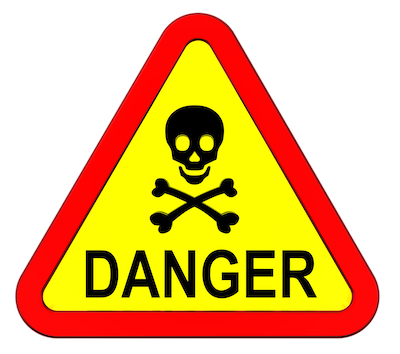By Ashley W. Dugger, SHRM-CP
While you may not have this in your hazardous materials policy, toxic workplace culture can have devastating impacts on employee experience and engagement, recruiting and retention, DEI efforts, productivity, and company success. Before we can dive into how to clean up a toxic workplace culture, we must be willing to engage in honest assessments of our current organizational cultures. Toxic culture is not always driven by widespread, unhealthy, and unproductive behaviors. Sometimes one person acting in ways that contribute to toxicity at work can be enough to cause irreparable damage.
Regardless of how widespread toxic behaviors are at your workplace, the impact of these unhealthy workplace cultures cannot be ignored. According to recent research from SHRM, highlighted by Forbes in November 2021, “58% of employees quit a job due to a toxic workplace culture and the annual cost of culture-related turnover is $223 billion.”
We’ve all heard about The Great Resignation, the impacts of COVID-19 on the workplace, and the growing importance of organizational culture for employees seeking a place to dedicate their time and professional talents. MIT Sloan Management Review noted in a January 2022 article titled “Toxic Culture Is Driving the Great Resignation” that a toxic culture “is 10.4 times more likely to contribute to attrition than compensation.” A toxic workplace culture might be immediately apparent – burnout, overwork due to unrealistic and unrelenting expectations, abundant cliques, hostile interactions, disrespectful and unprofessional communication, lack of inclusion, minimal trust. All of these are red flags that a toxic culture has not only spilled into your organization, it has likely embedded itself as “normal” for your employees.
On the other hand, a toxic culture might manifest when a single individual or small numbers of employees demonstrate negative behaviors – and due to their power, influence, and standing within the organization, they can create environments of fear, unease, intimidation, bullying, or discrimination/harassment. If there are days where employees are telling you they feel physically sick coming into work, that meeting with a particular leader or teammate makes them anxious or fearful, or speaking up about a project or policy feels like it could derail their career – toxic workplace culture is already present and needs addressed before further damage can occur.
Whether you need to address toxicity stemming from one person, a team, or the entire organization, there are ways that HR professionals can start cleaning up the spill and making positive lasting impacts on the workplace culture. The first and perhaps most important step is to address toxic behavior immediately and directly. If you are aware of the sources of toxic culture, this can be more easily addressed. Sometimes, however, you might need to dig deeper to find the sources of toxic culture. Surveys, focus groups, and open, vulnerable, and transparent discussions and interactions with employees at all levels of the organization will be critical to better pinpoint the drivers of toxic culture.
Once you know the source(s), you can begin to put together your action plan to address these behaviors through direct conversation, potential performance improvement plans, training and development, and coaching.
As with any situation where you seek employee feedback, you must be honest about what you are going to do with the information to make a change, and actually follow through with action. Be clear and consistent with communication and policies that address expected workplace behavior. This has to be applied uniformly – when employees see favoritism at play, and that some employees/leaders are held to one set of standards while others are allowed to engage in negative behaviors and practices, more division and unease result.
Expected behaviors, as well as policies against toxic workplace behavior, will need to be regularly and openly communicated. Take a hard look at your rewards and recognition programs. Are the right people truly being recognized? If employees are watching a team or leader constantly being praised for their hard work, yet to the broader organization they are known for their toxic behavior, this can quickly erode trust in the organization, the leadership, and your stated cultural values. Gain leadership buy-in by presenting them with results from the focus groups, surveys, retention data, exit interviews, and other sources of data to show the true impact of toxic culture on the bottom line and employer reputation.
You will need leadership support at all levels to change a toxic culture. As you start to move the needle, you will need to follow up with employees regularly to see which methods are working to drive positive change, and what they feel have been the biggest impacts. Righting the ship after a toxic culture has festered is not a quick-and-easy fix. Long-lasting changes will have to be made and sustained, and this requires ongoing effort and dedication. The importance of a healthy workplace culture should be constantly top-of-mind for the entire organization so as not to slip back into a toxic spill once again.

Program Chair-Human Resource Management
ashley.dugger@wgu.edu
www.WGU.edu
